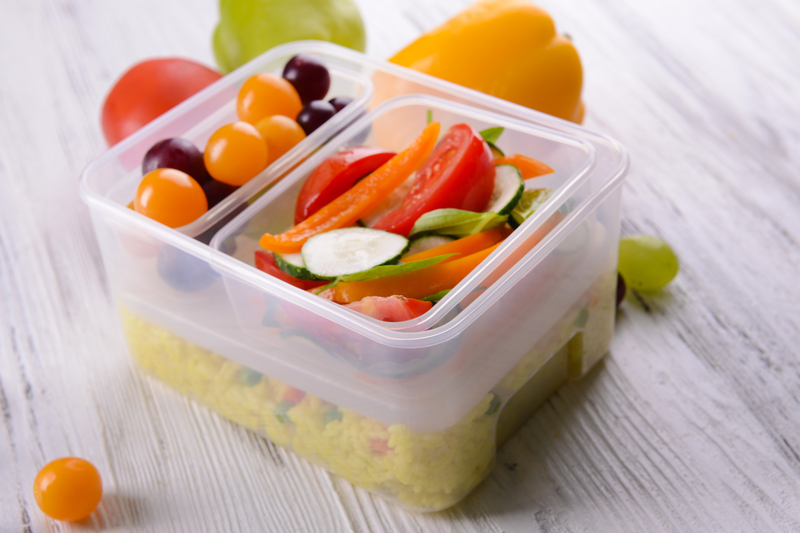Empowering Consumers in Packaging and Cardboard Recycling
In a world rapidly shifting toward sustainability, the responsibility for recycling packaging materials and cardboard no longer rests solely on municipal authorities and manufacturers. Consumers are becoming pivotal players in the movement for responsible packaging disposal and cardboard recycling. Empowering consumers to make informed decisions and effectively participate in the recycling process not only benefits the environment but also propels the circular economy forward. This article explores all facets of consumer empowerment in packaging and cardboard recycling, offering comprehensive guidance, actionable tips, and insights into emerging best practices.

Understanding the Significance of Packaging and Cardboard Recycling
Every year, millions of tons of packaging materials and cardboard boxes are produced, used, and discarded across the globe. Packaging constitutes a significant portion of municipal solid waste, particularly with the surge of e-commerce and online shopping habits. Consumers encounter various types of packaging, from food wrappers to shipping cartons, many of which are recyclable when managed correctly.
Environmental Impact of Improper Disposal
- Landfill Overflow: Cardboard and packaging materials can take up significant space in landfills, leading to environmental degradation and resource wastage.
- Resource Depletion: Virgin material for cardboard and paper comes from trees, the overuse of which contributes to deforestation and ecosystem imbalance.
- Greenhouse Gas Emissions: Decomposing cardboard in landfills produces methane, a potent greenhouse gas.
- Pollution: Plastic packaging, when not recycled, pollutes water bodies and endangers wildlife.
Recognizing these negative consequences underscores the critical importance of consumer awareness and active participation in packaging and cardboard recycling.
How Consumers Can Play a Vital Role in Recycling
Many consumers want to make a positive impact but often feel disempowered due to confusion about recycling protocols, the presence of unrecyclable materials, or lack of infrastructure. Bridging this knowledge gap is fundamental to fostering consumer empowerment in packaging recycling.
1. Educating Yourself on Local Recycling Rules
- Each locality may have different guidelines regarding what packaging and cardboard can be recycled. Sign up for city or county newsletters devoted to waste management.
- Look up information on acceptable materials, sorting requirements, and collection days for your neighborhood. This awareness ensures your recycling efforts aren't in vain.
- Commonly Recyclable Items: Most corrugated cardboard (shipping boxes), paperboard (cereal boxes), and some rigid plastics.
- Common Contaminants: Wax-coated boxes, greasy pizza boxes, mixed-material packaging (plastic-metal-paper combinations).
2. Practicing Proper Preparation of Cardboard and Packaging
- Remove Tape and Labels: Peel off plastic tape and shipping labels from boxes. While minor residue is often permitted, large amounts can contaminate recycling.
- Flatten Cardboard Boxes: Flattening saves space in recycling bins and eases municipal collection and processing.
- Keep Materials Dry: Wet or soiled cardboard cannot be recycled efficiently--ensure items are clean and dry before placing them in bins.
- Sort by Material: Separate pure cardboard and paper products from those merged with metal or plastic, whenever possible.
3. Recognizing and Avoiding Common Recycling Mistakes
- Pizza Boxes: While made of cardboard, pizza boxes contaminated with oil or cheese residue are often not recyclable. Remove and recycle the clean parts only.
- Mixed Packaging Materials: Multi-layered packaging (like chip bags or juice boxes with plastic liners) are usually unrecyclable in standard curbside bins.
- Plastic Windows: Remove plastic windows from cardboard packaging before recycling. The paper portion can usually be processed.
Packaging Choices: How Informed Decisions Empower Consumers
One of the most powerful forms of consumer empowerment in packaging and cardboard recycling comes from making conscious purchasing decisions. Brands are increasingly responsive to informed consumers who demand sustainable packaging solutions.
What to Look for When Selecting Products
- Recyclability: Prefer products with packaging clearly labeled as recyclable. Look for the recycling symbol and check for local eligibility.
- Post-Consumer Recycled Content: Choose packaging made with recycled materials, signaling support for the recycling market and reduced reliance on virgin resources.
- Minimal Packaging: Companies that practice packaging minimization reduce material use altogether, making downstream recycling easier.
- Mono-Material Packaging: Products packaged in a single material (all cardboard, all plastic) are vastly easier to recycle.
- Biodegradable or Compostable Packaging: Where applicable, use packaging that can degrade in home composting systems. However, note that "biodegradable" does not always mean home-compostable or easily recycled.
Understanding Recycling Labels and Certifications
- Mobius Loop: The familiar three-arrow triangle usually indicates recyclability, but does not guarantee local acceptance.
- Resin Identification Codes: Numbers inside the triangle (typically for plastics) indicate specific material types--research which numbers are accepted in your region.
- FSC Certification: Cardboard and paper packaging with the Forest Stewardship Council mark come from responsibly managed forests.
Spread the Word: Encouraging Community Involvement
Empowering consumers does not stop with individual practice; motivating family, friends, and neighbors to recycle properly amplifies the collective impact. Community action can influence local recycling capabilities and even push for infrastructure improvements.
Community Initiatives That Make a Difference
- Host Recycling Workshops: Organize or attend hands-on sessions that demonstrate correct sorting and preparation techniques.
- Social Media Advocacy: Share local recycling success stories, best practices, and myth-busting facts in community groups.
- Participate in Cleanup Drives: Engage in cleanups targeting mismanaged waste, encouraging a cleaner neighborhood and raising awareness of recycling etiquette.
- Advocate for More Recycling Points: Petition local officials for more accessible drop-off locations, public collection bins, or upgrades in recycling infrastructure.
The Role of Technology in Consumer Empowerment
The digital age offers a host of resources to empower consumers in packaging and cardboard recycling. By leveraging technology, individuals can simplify recycling decisions and boost overall efficacy.
Useful Digital Tools and Resources
- Recycling Apps: Apps like iRecycle, Recycle Coach, and local waste collection apps provide reminders, information on accepted materials, and nearest drop-off points.
- Barcode Scanning: Some platforms enable users to scan product barcodes to determine recyclability or discover nearby recycling centers.
- Online Recycling Guides: Government and NGO websites offer detailed guides, FAQ sections, and explainer videos catering to specific localities and materials.
Technological empowerment streamlines the recycling process and reduces confusion for everyday consumers.
Smart Packaging and the Future of Recycling
- QR Codes and NFC Chips: Increasingly, packaging includes scannable codes that link to recycling instructions or information about material origin.
- Innovative Material Tracking: Blockchain and IoT technologies could enhance transparency, ensuring packaging is responsibly sourced and disposed of.
Supporting Brands with Responsible Packaging
Consumers wield immense power through their purchasing choices. By favoring brands committed to sustainable packaging and transparent supply chains, consumers accelerate industry-wide adoption of environmentally friendly practices.
How to Identify and Support Responsible Brands
- Research Brand Policies: Check company websites for sustainability reports and packaging commitments.
- Look for Third-Party Endorsements: Certifications such as FSC, B Corp, and other eco-labels often indicate genuine efforts towards sustainable packaging.
- Provide Direct Feedback: Reach out to companies to express appreciation for sustainable practices or encourage better packaging choices.
- Participate in Boycotts or Campaigns: Support collective consumer actions advocating for zero-waste or plastic-free packaging solutions.
The Challenges in Packaging and Cardboard Recycling
Despite growing attention and advances, major challenges persist in empowering consumers in packaging and cardboard recycling:
- Lack of Standardization: Recycling rules differ vastly between regions, sowing confusion and discouraging compliance.
- Non-recyclable Packaging Growth: Many products still use complex, non-recyclable materials, undermining consumer efforts.
- Wishcycling: Some well-meaning consumers put non-recyclable items into bins hoping they'll be recycled, increasing contamination and costs.
- Limited Recycling Infrastructure: Not all communities have curbside collection or adequate facilities for all types of packaging.
- Lack of Consumer Awareness: Misinformation or apathy can hinder proper recycling behaviors.

Actionable Tips for Empowered Recycling
For those seeking to improve their recycling habits, here are effective, empowering tips for excelling in packaging and cardboard recycling:
- Stay Updated: Municipal recycling protocols can change; stay informed with your local authority's website or waste notification system.
- Contaminate Less: If in doubt about whether something is recyclable, leave it out. Contaminated recycling batches often end up in landfills.
- Invest in Separate Bins: At home or work, use clearly labeled containers for general waste, recyclables, and compostables.
- Reuse Before Recycling: Repurpose sturdy cardboard boxes for storage or crafting before discarding.
- Encourage Others: Share your recycling knowledge and inspire neighbors, family, and friends.
Conclusion: Building a More Sustainable Future Together
Empowering consumers in packaging and cardboard recycling is about more than simply following rules - it's about becoming proactive agents of change. Making informed packaging choices, diligently preparing materials for recycling, and fostering household and community-level engagement are transformative steps. As technology advances and brands respond to conscious consumer expectations, the possibility of a truly circular, sustainable economy becomes increasingly attainable.
By embracing these actionable strategies and spreading awareness, every consumer can become a catalyst for impactful change in packaging and cardboard recycling. The journey to a greener planet starts with individual choices that collectively shape a more sustainable tomorrow.
Take Action Today!
- Review your recycling habits and challenge yourself to minimize contamination and maximize material recovery.
- Seek out brands dedicated to sustainable packaging and show support through your purchasing power.
- Educate your community and leverage digital tools to stay informed and empowered.
- Together, we can reshape the future of packaging and cardboard recycling for the better.